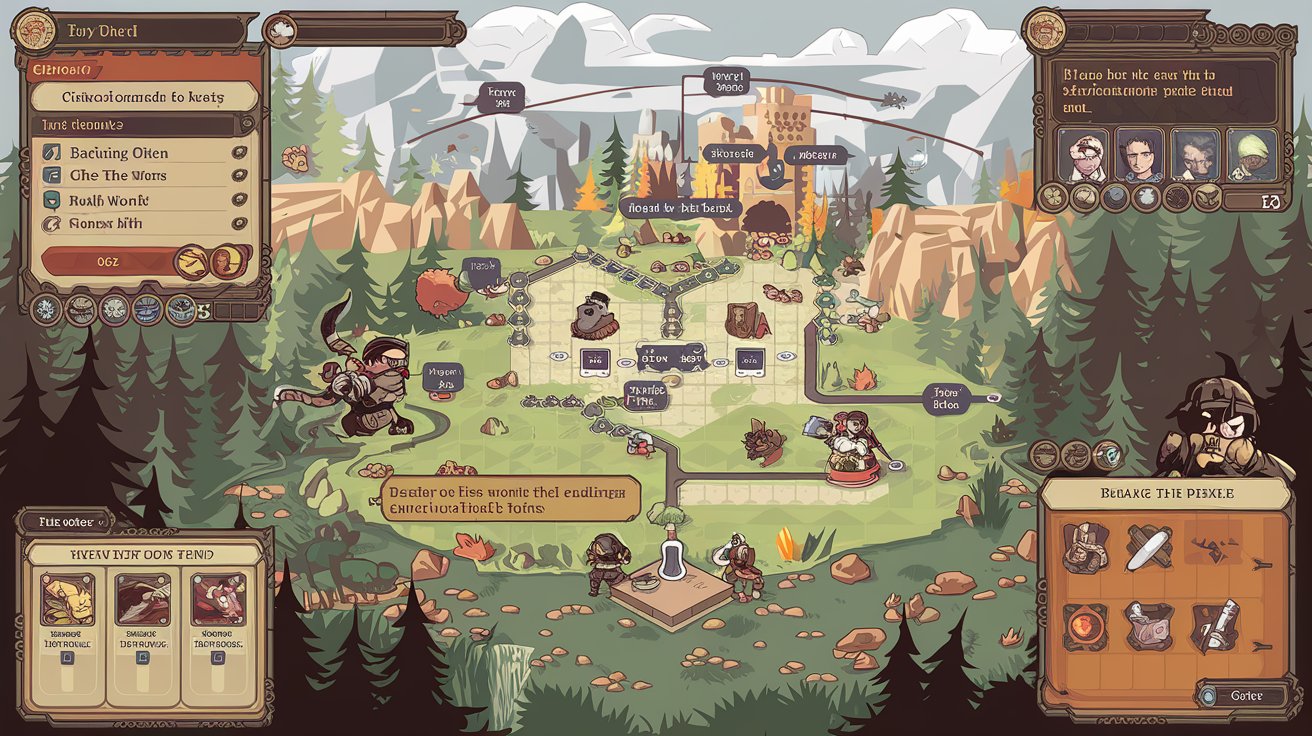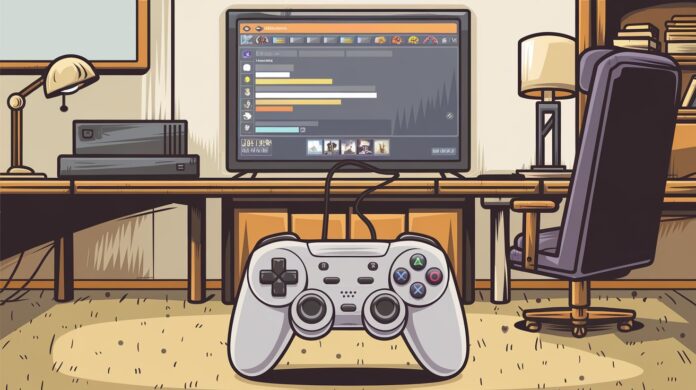Japanese Role-Playing Games (JRPGs) have captivated players worldwide for decades with their rich storytelling, unique art styles, and intricate gameplay systems. From the emotional journeys of Final Fantasy to the whimsical adventures of Pokémon, JRPGs offer some of the most memorable gaming experiences available. However, for newcomers, the genre can seem intimidating with its complex battle mechanics, lengthy playtimes, and decades of history.
This guide aims to break down the barriers to entry and provide everything you need to know to begin your JRPG journey. Whether you’re a seasoned gamer looking to explore a new genre or a complete beginner to video games, you’ll find helpful advice to make your first steps into this vibrant world both enjoyable and rewarding.
What Makes JRPGs Unique?
Before diving into specific games, it’s important to understand what sets JRPGs apart from other gaming genres:
Storytelling Focus
JRPGs are renowned for their narrative depth. Unlike many Western RPGs that emphasize player choice and customization, JRPGs typically offer more linear, author-driven stories with predefined characters. This approach allows for tightly crafted emotional arcs and character development.
Turn-Based Combat
Traditionally, JRPGs feature turn-based battle systems where players select commands for each character from menus rather than executing real-time actions. This strategic approach gives you time to think about your next move, making these games accessible even to those with less gaming experience.
Distinctive Art Style
JRPGs often showcase unique visual aesthetics influenced by anime and manga. From the colorful worlds of Dragon Quest to the stylized characters of Persona, the genre’s visual identity is instantly recognizable and part of its enduring appeal.
Progression Systems
Character advancement through experience points, equipment upgrades, and skill trees is a cornerstone of the genre. JRPGs reward players with a satisfying sense of growth as their characters become more powerful throughout their journey.
Choosing Your First JRPG

Selecting the right game for your first foray into JRPGs can significantly impact your experience. Here are some excellent entry points based on different preferences:
For Story Enthusiasts: Final Fantasy X
Final Fantasy X combines an emotional narrative with accessible gameplay mechanics. The story follows Tidus, a star athlete transported to a fantasy world called Spira, where he joins a summoner named Yuna on her pilgrimage to defeat a destructive force known as Sin.
Why it’s beginner-friendly:
- Linear progression that clearly guides players
- Intuitive turn-based combat system
- Full voice acting helps engage with the characters
- The Sphere Grid progression system allows for gradual learning
For Those Seeking Accessibility: Pokémon Sword/Shield or Pokémon Legends: Arceus
The Pokémon series has introduced millions to JRPGs with its approachable mechanics and charming creature-collection premise.
Why it’s beginner-friendly:
- Simple combat system based on elemental strengths and weaknesses
- Forgiving difficulty curve
- Engaging collection aspect that provides clear goals
- Extensive tutorials and in-game help
For Modern Gaming Sensibilities: Persona 5 Royal
This stylish JRPG balances traditional turn-based combat with life simulation elements, as you play a high school student by day and phantom thief by night.
Why it’s beginner-friendly:
- Extensive tutorial phase introduces concepts gradually
- Striking visual design and UI make information clear and engaging
- The calendar system creates natural pacing
- Multiple difficulty options to suit your preference
For Action-Oriented Players: Tales of Arise

If turn-based combat seems too slow, the Tales series offers a more action-focused alternative while maintaining JRPG storytelling conventions.
Why it’s beginner-friendly:
- Real-time combat with accessible controls
- Beautiful visuals and animation
- Skill progression that gradually introduces complexity
- Compelling character dynamics through “skits” (short dialogue scenes)
Understanding Common JRPG Mechanics
JRPGs share several fundamental mechanics that you’ll encounter across most games in the genre. Familiarizing yourself with these concepts will help ease your entry:
Turn-Based Combat
Many JRPGs use variations of turn-based combat systems:
- Traditional turn-based: Characters and enemies take alternating turns (Dragon Quest XI)
- ATB (Active Time Battle): Actions occur when a character’s time gauge fills (Classic Final Fantasy games)
- Press Turn: Exploiting enemy weaknesses grants extra actions (Shin Megami Tensei series)
Leveling and Progression
Character growth is central to JRPGs, typically involving:
- Experience points (XP): Earned from battles to level up characters
- Stats: Numerical values representing character capabilities (Strength, Magic, etc.)
- Equipment: Weapons, armor, and accessories that enhance stats
- Skills/Abilities: Special actions learned through leveling or other progression systems
Resource Management
Managing limited resources adds strategic depth:
- HP (Health Points): When depleted, characters are incapacitated
- MP/SP/AP: Resources spent to use special abilities or magic
- Items: Consumables that restore HP/MP or provide other benefits
- Currency: Money used to purchase equipment and items
Essential Tips for JRPG Beginners

1. Save Frequently
JRPGs are typically lengthy experiences, and regular saving prevents frustration from lost progress. Many modern JRPGs include auto-save features, but manual saves provide additional security.
2. Talk to NPCs (Non-Player Characters)
NPCs often provide valuable information about game mechanics, story hints, or side quests. Making a habit of speaking to characters in towns and other locations can enrich your experience.
3. Don’t Skip the Tutorial
While tutorials might seem tedious, they introduce crucial mechanics that you’ll need throughout the game. Pay special attention to combat and progression system explanations.
4. Be Patient with the Opening Hours
Many JRPGs have slow starts that establish characters and setting before the gameplay opens up. Give games at least 3-5 hours before deciding if they’re right for you.
5. Embrace Side Content
Side quests, mini-games, and optional dungeons often provide the most memorable moments in JRPGs. They also typically offer valuable rewards that make the main quest easier.
6. Use Online Resources When Needed
If you’re stuck, don’t hesitate to consult guides or community forums. The JRPG community is passionate and supportive of newcomers.
Breaking Down Specific Sub-Genres
The JRPG landscape is diverse, with several distinct sub-genres worth exploring:
Traditional Turn-Based JRPGs
Games like Dragon Quest XI and Octopath Traveler maintain classic turn-based combat where strategy and preparation are key. These games emphasize tactical decision-making over reflexes.
Beginner recommendation: Dragon Quest XI S: Echoes of an Elusive Age
Action JRPGs
Titles like Kingdom Hearts and Ys VIII blend JRPG storytelling with real-time combat that requires more active engagement. These games appeal to players who enjoy more dynamic gameplay.
Beginner recommendation: Ni No Kuni: Wrath of the White Witch
Strategy JRPGs (SRPGs)
Games like Fire Emblem: Three Houses and Final Fantasy Tactics incorporate tactical grid-based combat. These titles require thoughtful positioning and long-term planning.
Beginner recommendation: Fire Emblem: Three Houses
Monster Collection JRPGs
Pokémon is the most famous example, but games like Shin Megami Tensei and Yo-kai Watch also fall into this category. The focus is on collecting, training, and battling with various creatures.
Beginner recommendation: Pokémon Scarlet/Violet
Modern vs. Classic JRPGs
As a beginner, you might wonder whether to start with newer titles or explore the classics that defined the genre.
Benefits of Starting with Modern JRPGs:
- More intuitive user interfaces
- Quality-of-life features that reduce frustration
- Superior graphics and presentation
- Streamlined mechanics that respect player time
- Easier to obtain on current platforms
Value in Experiencing Classics:
- Understand the foundations of the genre
- Appreciate the evolution of JRPG design
- Experience influential stories and characters
- Often available in remastered or enhanced editions
- Generally more affordable
Recommendation: Start with modern titles to ease into the genre, then explore classics once you’ve developed an appreciation for JRPGs.
Where to Play JRPGs
Today’s gaming landscape offers multiple platforms for enjoying JRPGs:
Nintendo Switch
The Switch has become a haven for JRPGs with its portable nature perfectly suited to the genre’s lengthy experiences. Notable titles include Xenoblade Chronicles series, Fire Emblem: Three Houses, and various Final Fantasy remasters.
PlayStation
PlayStation consoles have historically been strongly associated with JRPGs. The PS4/PS5 library includes Persona 5 Royal, Final Fantasy VII Remake, and Tales of Arise.
PC Gaming
Steam and other digital platforms have dramatically increased JRPG availability on PC. Almost all major modern JRPGs eventually make their way to PC, often with enhanced features.
Mobile
Many classic JRPGs have been ported to mobile devices, making them accessible on-the-go. Square Enix in particular has released many Final Fantasy titles on iOS and Android.
The Joy of JRPGs: What to Expect
As you embark on your JRPG journey, here’s what you can look forward to experiencing:
Emotional Investment
JRPGs excel at creating memorable characters and emotional moments. Don’t be surprised if you find yourself deeply invested in the fate of these digital companions.
The “Aha!” Moment
Many JRPG novices experience a pivotal moment when the genre “clicks” for them—whether it’s mastering a complex battle system or becoming engrossed in an unfolding story.
Community Connection
The JRPG community is passionate and welcoming. Sharing experiences, theories, and favorite moments with other fans can enhance your enjoyment.
Cultural Insights
JRPGs often incorporate elements of Japanese culture, mythology, and storytelling traditions. This exposure can spark interest in exploring these influences further.
Conclusion
JRPGs offer some of gaming’s most rewarding experiences, combining rich storytelling with engaging systems that provide dozens (sometimes hundreds) of hours of entertainment. While the genre may initially seem daunting, the right entry point and a bit of patience will reveal why these games have earned such a dedicated following worldwide.
Whether you’re drawn to epic narratives, strategic combat, unique art styles, or character-driven storytelling, there’s a JRPG waiting to welcome you into its world. Use this guide to take your first steps, and soon you might find yourself counting down the days until the next major JRPG release alongside veteran fans.
Remember that every JRPG expert was once a beginner. With an open mind and the willingness to immerse yourself in these fantastical worlds, you’re well on your way to discovering the magic that makes this genre special.
Happy gaming, and may your newfound JRPG journey be filled with adventure!

Zareb Saleh is a journalist at Gulf Today and a ghostwriter for Gameoholic, specializing in gaming, technology, and digital culture. With a keen eye for industry trends, he delivers insightful stories that engage and inform readers.




